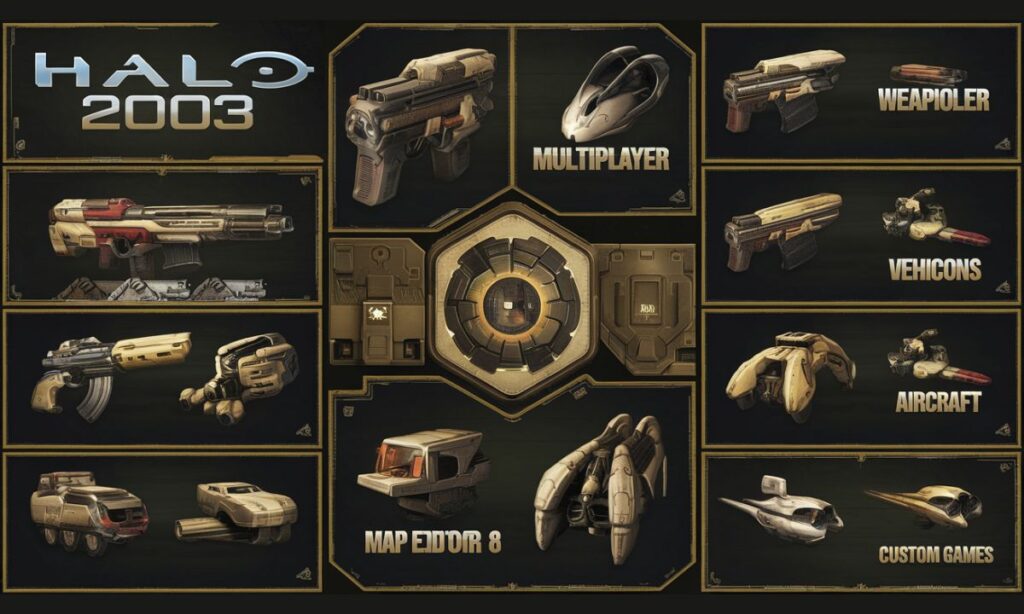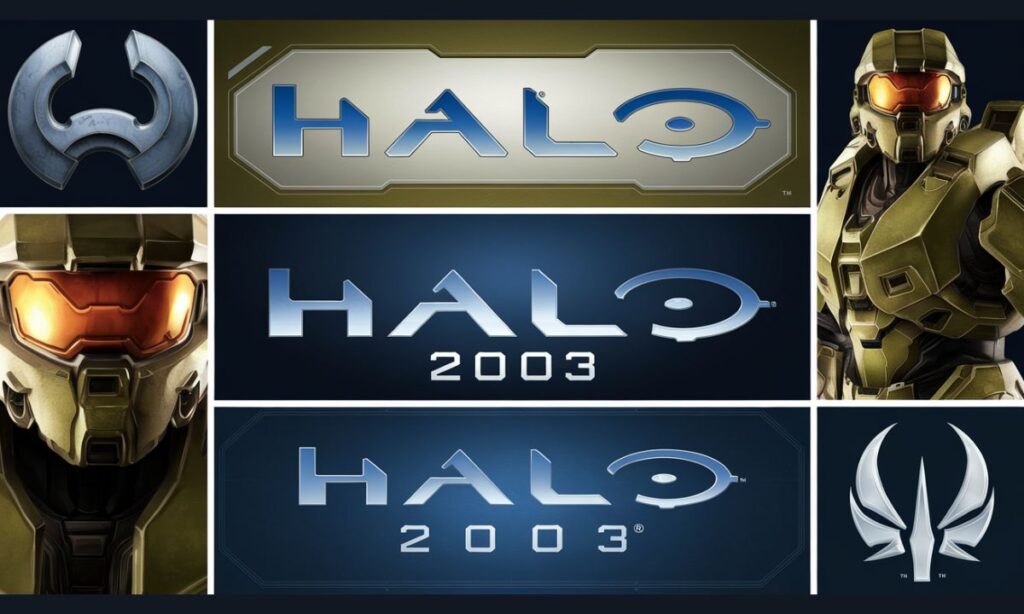Halo 2003 revolutionized the gaming world, not just with its groundbreaking gameplay, but also through its visually stunning icons and banners. These elements weren’t mere decorations; they were the beating heart of Halo’s visual identity, setting a new benchmark for excellence in game design.
From the iconic Energy Sword to the instantly recognizable Mjolnir armor, Halo’s symbols became more than just in-game assets. They evolved into cultural touchstones, representing an era of innovation in the gaming industry. The game’s visual excellence didn’t just enhance player immersion; it redefined how gamers interact with virtual worlds.
In this deep dive, we’ll explore the legacy of Halo 2003 game icons and banners. We’ll uncover how these visual elements shaped the player experience, influenced game design, and left an indelible mark on gaming culture. Get ready to revisit the visual masterpiece that is Halo 2003.
The Legacy of Halo: Combat Evolved

Halo: Combat Evolved, released in 2001, didn’t just change the face of first-person shooters; it revolutionized the entire gaming landscape. Developed by Bungie and published by Microsoft Game Studios, this groundbreaking title set new standards for gameplay, storytelling, and visual design.
But it’s the game’s iconic visuals that we’re here to explore – specifically, the Halo 2003 game icons and banners that became synonymous with excellence in gaming aesthetics.
When Halo 2 hit the shelves in 2003, it built upon the solid foundation of its predecessor, elevating every aspect of the game to new heights. The visual identity of Halo 2003 became a benchmark for the industry, with its game icons and banners playing a crucial role in creating an immersive and unforgettable player experience.
Understanding Game Icons and Banners

Before we dive deeper into Halo’s visual excellence, let’s break down what we mean by game icons and banners:
- Game Icons: These are small, distinctive images representing various elements within the game, such as weapons, characters, or abilities.
- Banners: Larger visual elements used in user interfaces, loading screens, and promotional materials to convey the game’s theme and atmosphere.
In Halo 2003, these elements weren’t just afterthoughts – they were integral to the game’s identity and player immersion. The icons and banners in Halo 2003 set a new standard for visual excellence in gaming, influencing countless titles that followed.
Design and Evolution of Icons and Banners

The evolution from Halo: Combat Evolved to Halo 2003 saw a significant leap in visual fidelity and design sophistication. Let’s explore some of the most iconic Halo symbols and how they contributed to the game’s visual excellence:
- Energy Sword: This sleek, glowing weapon became one of the most recognizable icons in gaming history.
- Battle Rifle: The BR’s silhouette was instantly identifiable and represented precision and skill.
- Mjolnir Armor: Master Chief’s iconic suit became a symbol of heroism and advanced technology.
These unique icons weren’t just visually appealing; they served crucial gameplay functions. Players could quickly identify weapons, vehicles, and power-ups at a glance, enhancing the fast-paced combat Halo was known for.
The color palette of Halo 2003’s icons and banners deserves special mention:
| Color | Significance |
| Green | Representing Master Chief and the UNSC |
| Blue | Symbolizing Covenant technology |
| Red | Indicating danger or enemy presence |
| Purple | Associated with Covenant nobility |
This thoughtful use of color not only made the game visually striking but also conveyed important information to players, enhancing both aesthetics and gameplay.
Impact on Gameplay and Player Immersion

The visual excellence of Halo 2003 game icons and banners had a profound impact on gameplay and player immersion. Here’s how:
- Enhanced User Experience: Clear, distinctive icons allowed players to make split-second decisions in the heat of battle.
- Multiplayer Innovation: Banners in multiplayer lobbies and matchmaking screens helped create a sense of identity and competition.
- Atmospheric Contribution: The consistent visual style of icons and banners reinforced the game’s unique sci-fi atmosphere.
One of the most significant innovations was the use of player emblems – customizable icons that represented individual players in multiplayer matches. This feature, which became a staple of the series, allowed for personal expression within the game’s visual framework.
“The icons and banners in Halo 2003 weren’t just pretty pictures; they were a language that spoke directly to the player, enhancing every aspect of the game.” – Anonymous Halo veteran
Cultural Legacy and Fan Creations

The visual excellence of Halo 2003 game icons and banners extended far beyond the game itself, inspiring a rich tapestry of fan creations and cultural impact:
- Fan Art: Artists around the world have created countless pieces inspired by Halo’s iconic visuals.
- Merchandise: From t-shirts to posters, Halo’s symbols have become highly sought-after collectibles.
- Mods and Custom Content: The PC gaming community has created numerous mods and custom content, often incorporating or reimagining Halo’s iconic visuals.
This cultural impact demonstrates the enduring power of Halo 2003’s visual design. The game’s icons and banners didn’t just serve a purpose within the game; they became part of gaming culture at large.
Conclusion about Halo 2003 Game Icons Banners
The legacy of visual excellence established by Halo 2003 game icons and banners continues to influence game design today. By creating a cohesive, functional, and aesthetically pleasing visual language, Bungie set a new standard for what players could expect from a video game’s visual identity.
As we look to the future of gaming, the lessons learned from Halo 2003 remain relevant. The power of strong visual design to enhance gameplay, create immersion, and build a lasting cultural impact cannot be overstated.
Whether you’re a game designer, a Halo fan, or simply someone who appreciates visual excellence in gaming, the iconic designs of Halo 2003 offer a masterclass in how to create a truly unforgettable gaming experience.
The Halo 2003 game icons and banners stand as a testament to the power of thoughtful, purposeful design in gaming. They remind us that in the world of video games, every visual element has the potential to enhance the player’s experience and leave a lasting impression on gaming culture as a whole.
FAQs about Halo 2003 game icons and banners
What are the game icons in Halo (2003)?
Energy Sword, Battle Rifle, Warthog, Mjolnir armor, and HUD elements for shields, health, and ammo. These icons represent key gameplay items and stats.
How do banners enhance the gaming experience in Halo?
Banners create a cohesive visual identity, immerse players in the sci-fi universe, and display crucial info like ranks and game modes in multiplayer lobbies and menus.
Who designed the iconic Halo logo?
Lorraine McLees, a former Bungie employee, designed the iconic Halo logo during the development of Halo: Combat Evolved.
How have Halo’s icons and banners influenced other games?
They’ve inspired clear weapon designs in FPS games, popularized customizable player emblems in multiplayer, and influenced UI design and visual storytelling across various game genres.








